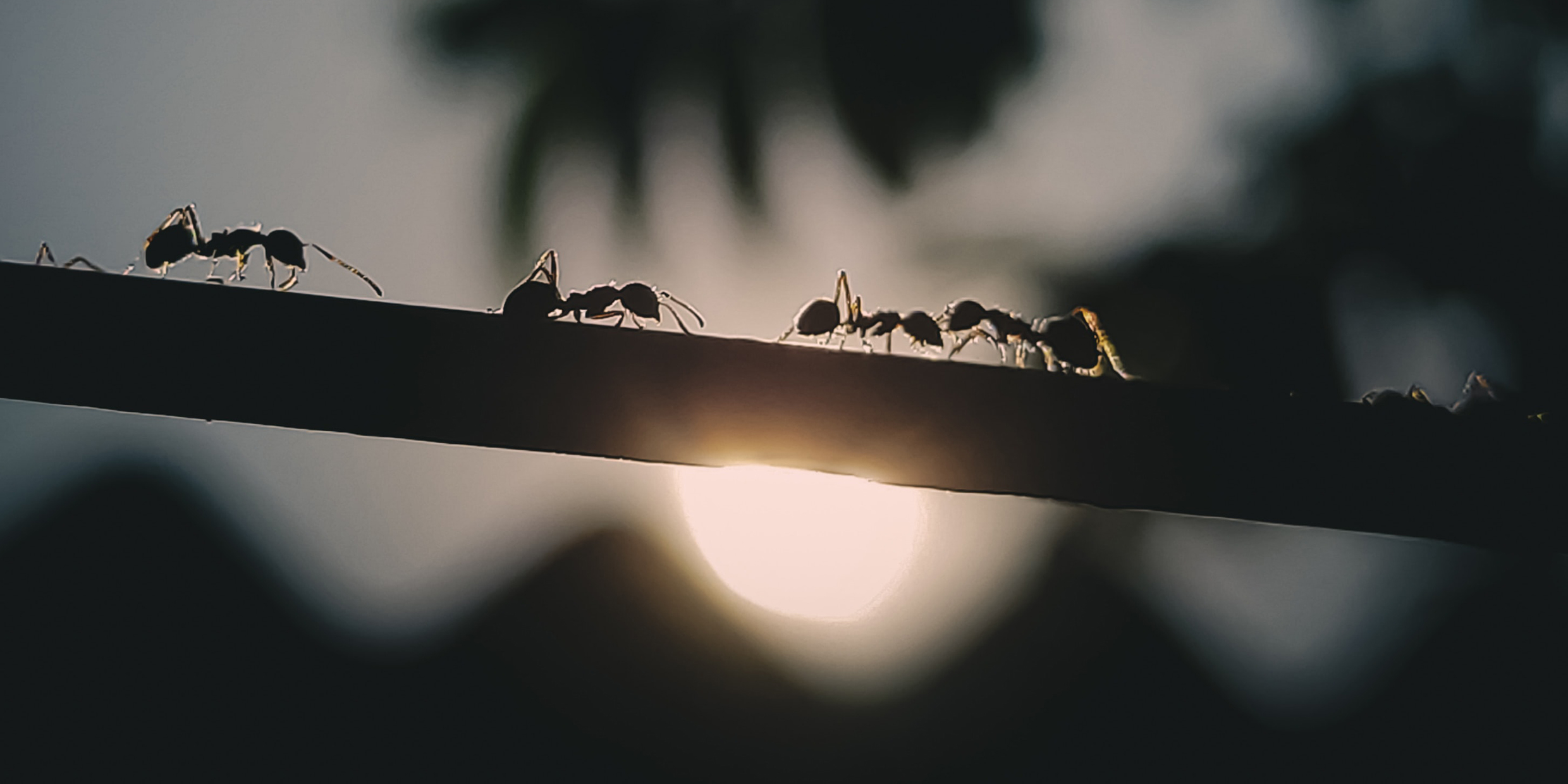Originally published 22 January 1996
EXUMA, Bahamas — “To pay attention, this is our endless and proper work,” writes the Pulitzer prize-winning poet Mary Oliver.
I’m trying, I’m trying. I spent the last hour of a late afternoon on the porch floor watching an army of ants move a dead moth. The ants were the size of flecks of salt, their legs and antennae barely visible to the unaided eye. The moth was the size of a double postage stamp. It was like a crowd of humans attempting to move a 747 airplane by the power of muscles alone.
What the ants lacked that humans might exploit was the ability to act in concert. No foreman directed their efforts. They scurried under and around the moth even as they heaved and pushed. They came and went, apparently at random. Yet the moth moved towards the edge of the porch with an almost imperceptible inevitability.
Where were they going? To what nest? Some common purpose kept the moth moving in the same direction, although to my lofty gaze the ants seemed to be pushing in every direction at once. Ensconced in a subterranean larder, the moth would be a copious food supply, a hulking mass of carbohydrates, proteins, fats, nucleic acids. I imagined the moth labeled with “Nutritional Information,” like a loaf of bread or box of cereal.
Down on my belly with reversed binoculars for a closer look. Clearly, the ants were communicating, although without speech or sound. How? By scent? A small vocabulary of chemicals, emitted and received, each molecule latching into an appropriate sense receptacle, like key and lock, triggering an impulse to the nervous system, to the pinpoint brain — tote that moth, lift that wing, bringing home the groceries.
Down on my belly, paying attention. Anyone would stop to watch a crowd of humans attempting to shift a 747. The ants and the moth were an equal spectacle. Only a matter of scale.
The slow progress of the dead moth across the porch floor was only a stage in a much longer journey of energy, from the core of a mid-sized yellow star, the sun, to the table of the ants.
It is a curious feature of the way the world is made that two protons together have less mass than two protons separately. The difference in mass is equivalent to an amount of energy given by Einstein’s formula E=mc2. Make protons stick together and you have access to this energy.
However, protons have a positive electrical charge, and like charges repel. To make protons stick, you must overcome the electrical repulsion and get the protons close enough together so that a short-range but powerful nuclear force comes into play. The nuclear force is attractive, a glue for particles.
Nowhere on Earth is there sufficient squeeze to overcome the electrical repulsion of protons and make them stick together, except in a few hugely expensive particle accelerators and fusion reactors. However, protons are easily crushed together at the centers of stars — all that enormous weight pushing down from above. Protons fuse at the center of the sun and release energy. The energy flows upwards, taking several million years to reach the surface, where it it released as heat and light.
The light streaks across 93 million miles of space, reaching the Earth eight minutes later, where it falls upon the green leaves of plants. The plants perform a bit of chemical magic, called photosynthesis, to store the energy in carbohydrates that the plant assembles from carbon dioxide and water.
The moth stops at the flower of the plant and sips the sugary nectar. It uses this packaged energy for its own purposes — flight, reproduction, and building a body rich with organic compounds. The moth beats its brains out against the porch light and falls dead to the floor, where it is discovered by the scout of a colony of ants. The call is raised: “Food!”
Now the rest of the colony arrives, at first in ones and twos, then en masse. A storm of purpose ignites in their tiny brains. Humping their backs and fiddling their legs, they go at the moth. It moves, it drifts, taking the packaged energy far longer to cross the porch than it took the same energy to travel from sun to Earth.
Darkness falls. The dead moth is not yet to the edge of the porch, although the ants are still trying. By morning they are gone, no sign of the moth, no sign of its final destination.
But the journey of the energy is not finished. A few more steps are undoubtedly in store before the degradation of energy is complete, before the energy is so thoroughly dispersed as to be of no more use to any living thing. The flow is unceasing, from star to life, cascading down the food chain, animating the planet, making possible even that most elevated of life’s work — paying attention.



